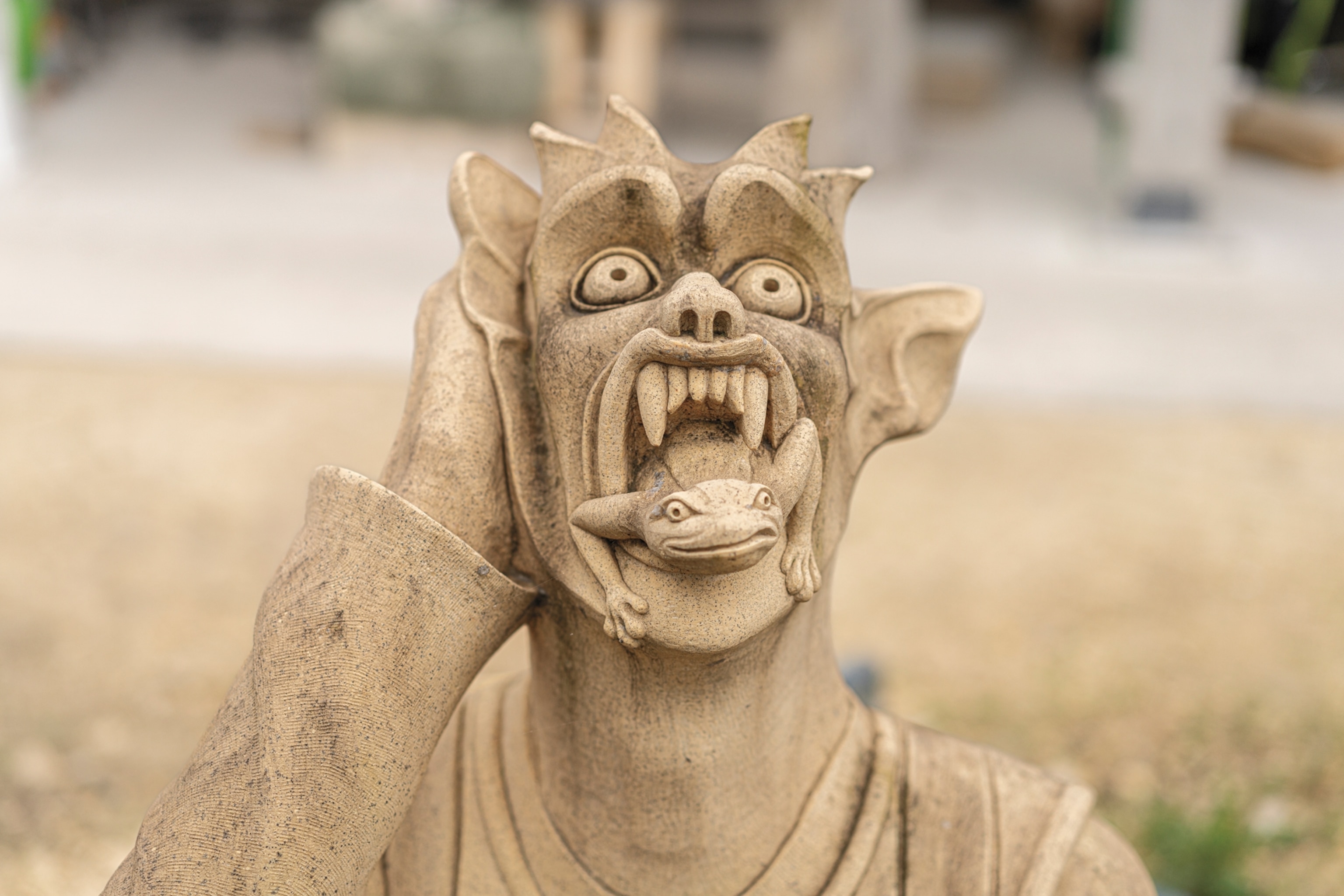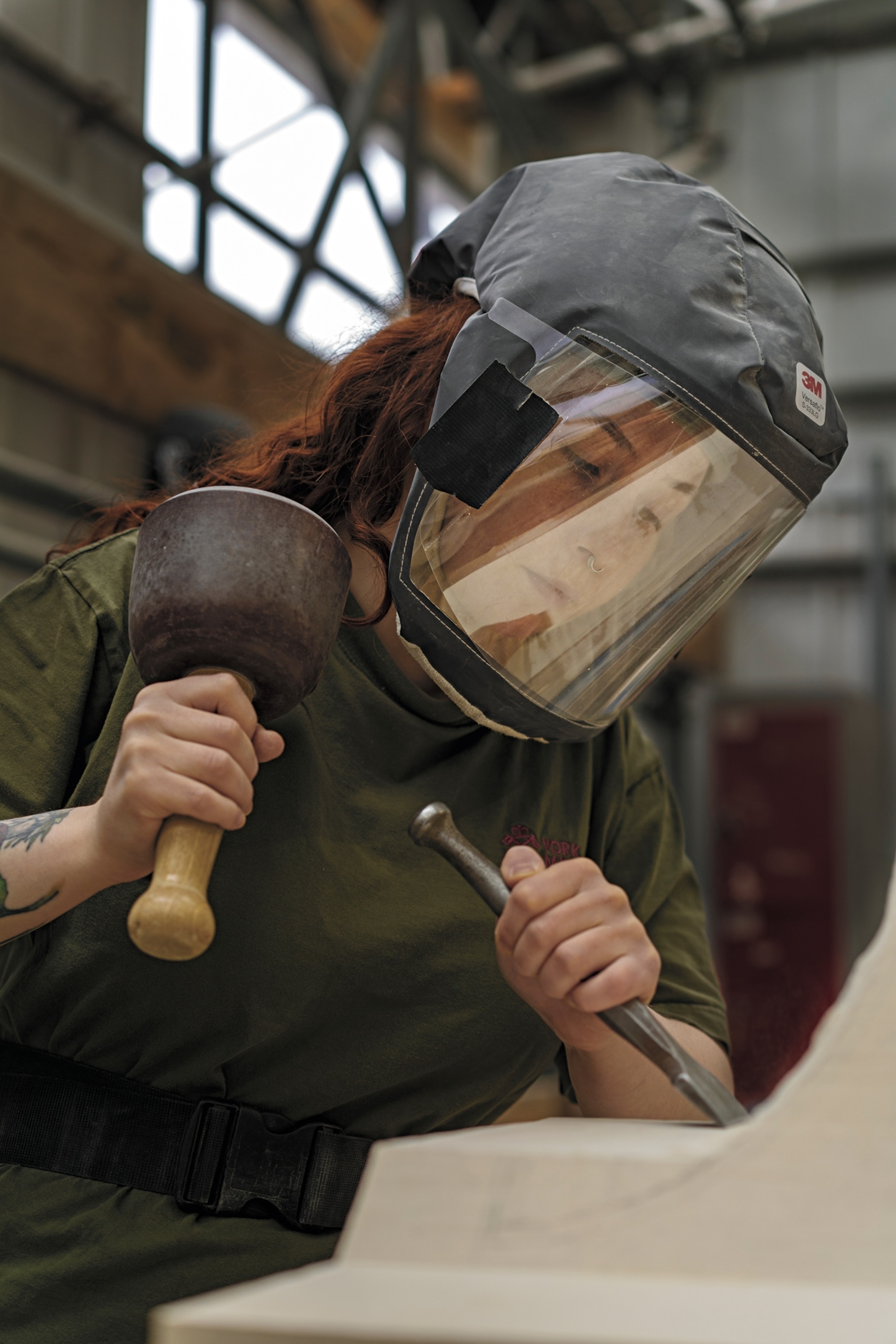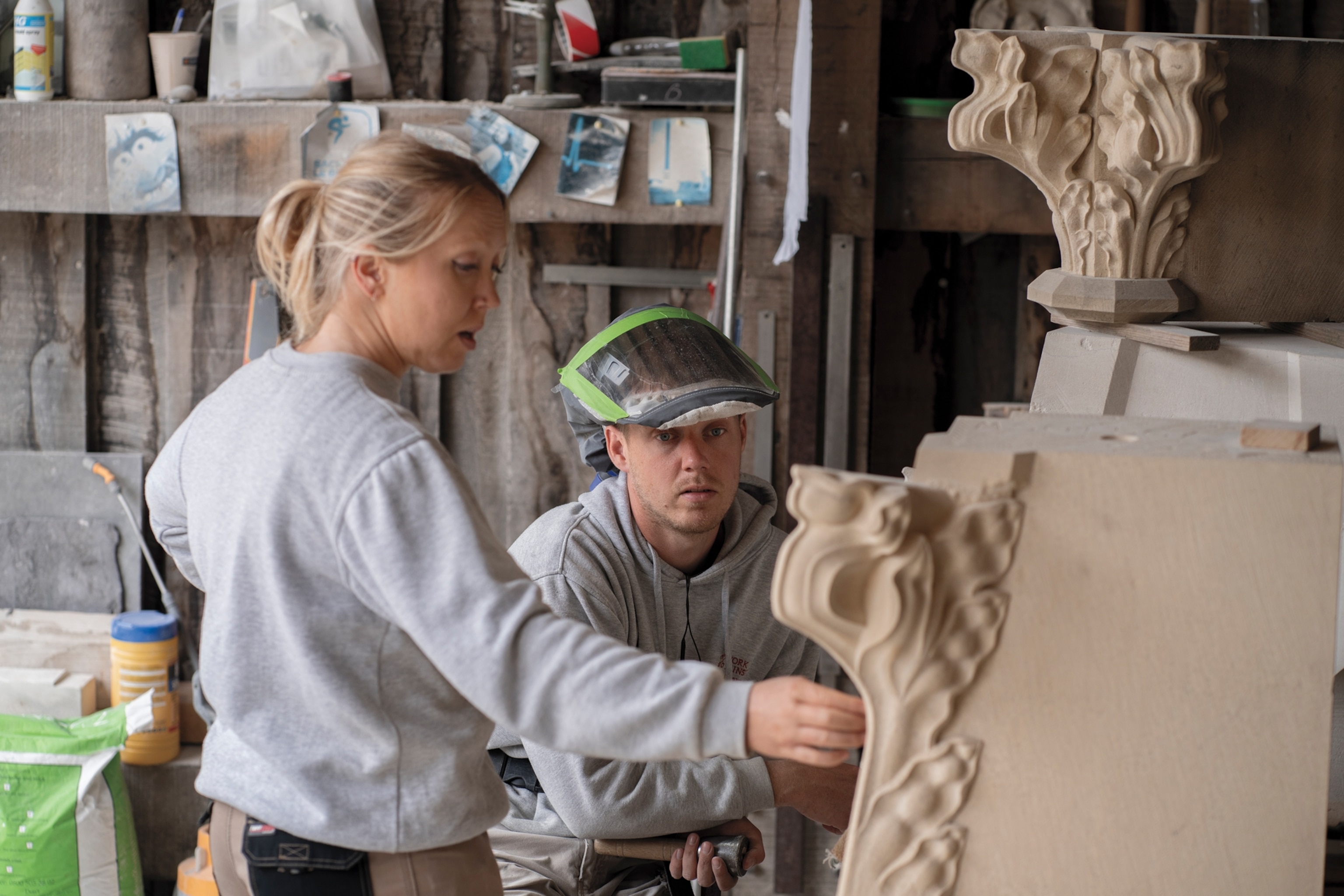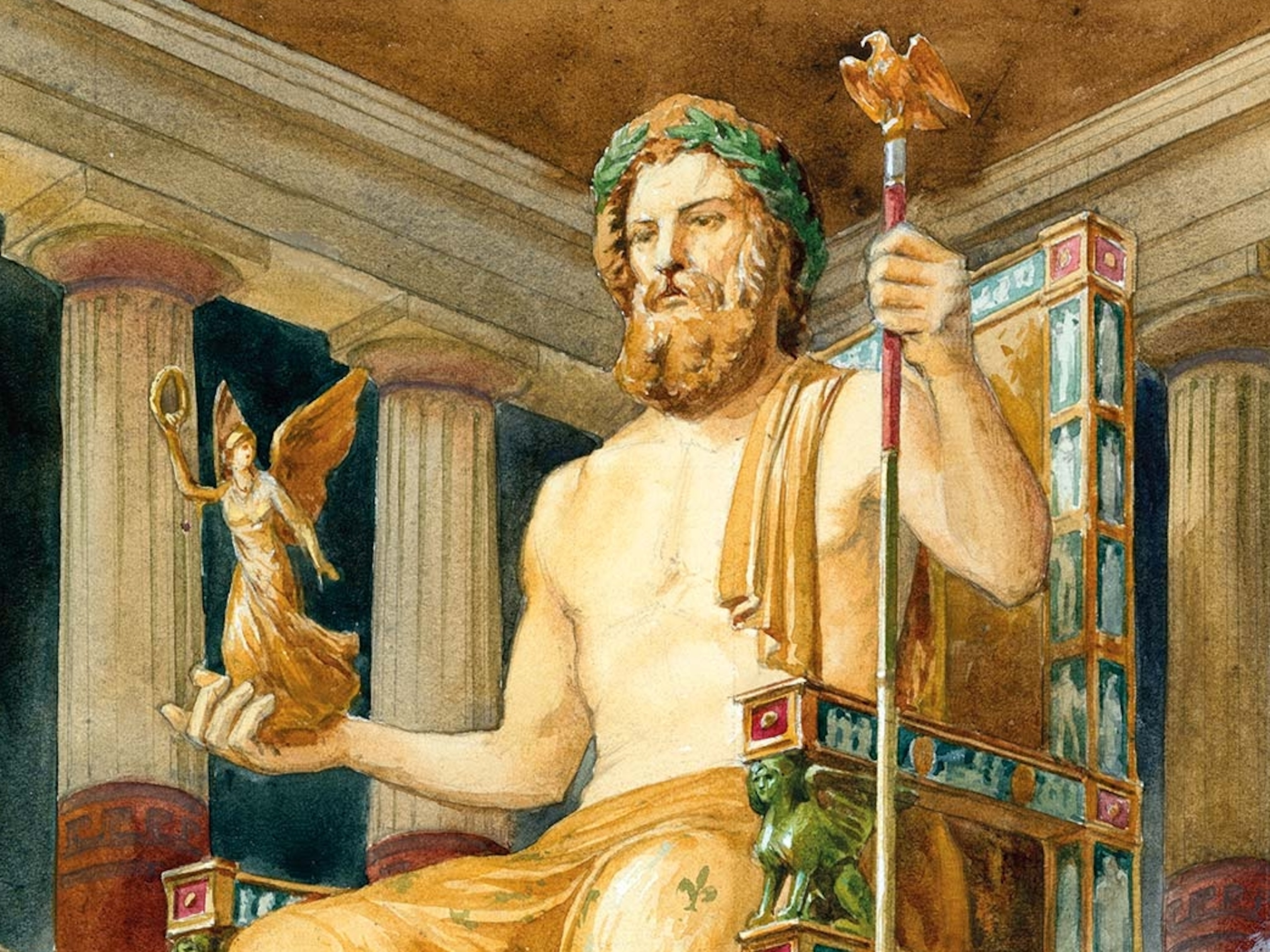Here's how you sculpt a medieval statue in the 21st century
At a cathedral in York, England, expert stonemasons are combining cutting-edge technology with ancient technique to bring beastly grotesques back to life.

On a damp spring morning in the ancient English city of York, a group of schoolchildren stopped in front of the iconic York Minster cathedral and broke into giggles, sharing uneasy looks. Built over a period of 250 years and consecrated in 1472, the church is the largest Gothic cathedral in Britain. It features three huge medieval towers adorned with shimmering stained-glass windows. But the kids were focused more intently on something at the edge of the stonemason’s yard outside the building that stared back at them: a large stone statue of a bestial creature in mid-scream, clutching its head as a frog sprang from its mouth.
Weighing about half a ton, the freshly made carving is a classic example of a medieval grotesque, a style of ornate architectural decoration that most people see only at a distance. During the Middle Ages, grotesques were placed atop religious buildings alongside similarly fanciful gargoyles—the key difference being that gargoyles are a style of grotesque with functional rainspouts.

This particular monster had been hand-carved out of about 1,510 pounds of local limestone by one of York Minster’s 12 full-time stonemasons. It is essentially a modern replica. When eventually hoisted up onto one of the buttresses on the cathedral, it will replace a similar statue that had been eroded to a faceless nub by centuries of wind and rain.
“We try to replace like for like,” says Lewis Morrison, the master stonemason who spent 14 weeks carving the statue. But Morrison admitted that even he wasn’t entirely sure that the original creation featured a frog. “It was so badly worn, you couldn’t tell much about it other than the pose, with the hand raised beside his head,” he says.
(See how stonemasons keep England’s oldest cathedrals standing tall.)
York Minster’s stonemasons face a tricky balance in restoring such architectural relics. So in addition to practicing the time-honored techniques of stone carving, they’ve learned to harness modern technology—and take some historically informed artistic license.
To re-create the beastly grotesque, for instance, Morrison and his team ascended to the church’s rooftop, where they used a camera capable of taking high-quality images that can be stitched together into a 3D model to render the statue’s exact dimensions. Next, they carved a polyurethane model of the weatherworn original as a reference copy, following the same lines, proportions, and silhouette of the original.
Morrison then spent weeks researching several similarly posed grotesques on York Minster and poring over 14th-century illustrated manuscripts before coming up with a theme and design. He eventually chose the timeless theme of good and evil: The beast holds its head while encountering the frog, which is a symbol of demons in medieval folklore. But viewers should also notice that the creature grips a fish in its other hand, symbolizing Christianity.

Once the design was approved by the cathedral’s architect, the slow, intimate process of carving began. It’s one that would have been readily recognizable to Morrison’s medieval counterparts with the same tools, same pale limestone, and same musical ring of steel on stone—cling, cling, cling!—sounding across the yard.
(It took a village to build Europe’s Gothic cathedrals.)
There’s been a permanent stonemason’s yard at York Minster for more than 200 years, part of a rolling program of restoration and repairs that began in the late 18th century. “It’s a never ending job,” says Alex McCallion, director of works and precinct at York Minster. “Our scaffolding is on a hundred-year rotation.”
Today, however, these methods of restoration continue to evolve. The cathedral recently opened a new workspace for its tradespeople called the Centre of Excellence for Heritage Skills and Estate Management, an over $10 million state-of-the-art facility just around the corner from the cathedral. The workshop is equipped with computer-controlled stone saws for roughly shaping blocks of limestone, along with laser scanners and digital software to help measure and virtually model designs. These tools can be wielded to not only replicate artifacts but also create entirely new ones, like a nearly two-ton statue of the late Queen Elizabeth II, sculpted from a block of French limestone, that now stands outside on the west end of the cathedral.

“It’s a big step into the future for us,” says McCallion, “although we won’t be abandoning our roots in traditional craftsmanship. Every piece we make will still be finished by hand, using the same tools—mallet and chisel—we’ve always used. It is vital that we do not lose humanity.”
Like the new grotesque, the statue of the queen should last throughout several centuries to come. There’s always more work to be done, though, ensuring that plenty more beasts will be rising from the mason’s yard.
(The story of how a stonemasons’ guild became the world's largest secret society.)





